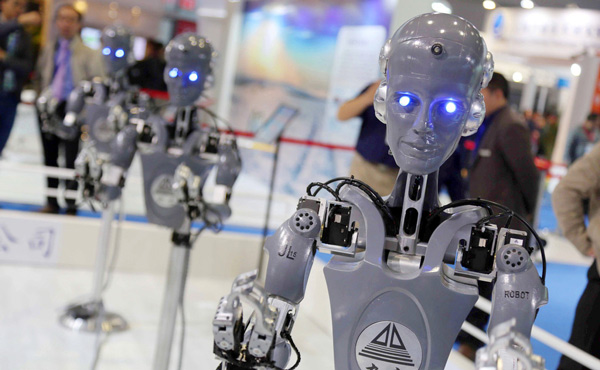The best way to generate wealth is to invest while keeping the years and decades ahead in mind. Businesses that are successful have likely spent years innovating and evolving.
That describes Nvidia (NVDA -3.00%) well as it originally developed leading central processing unit (CPU) computer chips used in gaming and eventually cryptocurrency mining applications. Now it’s the leading supplier for artificial intelligence (AI) applications.
Looking back to look ahead
Nvidia has been all the rage among market watches recently, but the company has been around for over 30 years. It’s been publicly traded since early 1999. CEO Jensen Huang was among the founders who initially aimed to develop graphics chips for personal computers. Its CUDA (compute unified device architecture) software platform was launched almost 20 years ago, and it is now an important part of the investment case.
The focus in its early years was on performance improvements in 3D graphics used in the gaming industry. But the stock performance lagged until the early 2020s when revenue began to grow from the Nvidia RTX platform that uses AI to create realistic graphics and visual effects for gaming, 3D design, and other uses.
Huang’s keynote speech at the recent CES conference was used to introduce the RTX 50-series chips that use Nvidia’s Blackwell graphics processing unit (GPU) architecture in the company’s AI accelerators.
That circle of innovation is what investors need to keep in mind to see what Nvidia can do in the coming decade. And Huang gave everyone a brief introduction to what’s coming in that CES keynote address.
Artificial intelligence (AI) will launch another wave of growth
Nvidia’s recent stock returns have been nothing short of phenomenal. As AI drives the need for more computing power, quarterly revenue increased by over 1,000% since 2020. Much of that came in the last two years as large tech companies spent heavily to build out data centers needed for AI applications.
Those companies are still investing to boost compute power. Microsoft President Brad Smith recently said his company expects to invest $80 billion in its fiscal 2025 for AI-enabled data centers used to train models. Smith commented, “None of this progress would be possible without new partnerships founded on large-scale infrastructure investments that serve as the essential foundation of AI innovation and use.”
Amazon also recently announced it has plans to spend about $11 billion to expand its presence in Georgia to support Amazon Web Services’ (AWS) cloud computing and AI technologies.
Nvidia is arguably the biggest beneficiary of this spending and investors have poured into the stock, driving shares over 2,000% higher since 2020.
Robotics and autonomous vehicles
Nvidia’s data center segment dominated its revenue path recently, but gaming revenue is still growing and represented a meaningful 9.4% of total revenue in the recent quarter. Huang sees another avenue for growth coming. Nvidia’s second-fastest-growing segment in the most recent quarter was automotive and robotics with a 72% year-over-year revenue increase.
In his CES conference speech, Huang spoke a lot about robots and self-driving cars — two real-world applications made possible by AI. Huang sees the “robotics era” coming soon, and grouped both humanoid robots and self-driving cars in that category. He said it could be the “largest technology industry the world has ever seen.” Nvidia’s robot operating system (ROS), Isaac, utilizes its CUDA-accelerated software packages and AI models to develop advanced AI robotics applications.
He also announced Nvidia’s next-generation processor for autonomous cars, called Thor. Thor processes the massive amount of sensor information from cameras, radar, and lidar (light detection and ranging) being used on vehicles. Using Nvidia’s latest CPU and GPU advances, including Blackwell architecture, Huang said Thor has 20 times the processing capability of the previous generation chip, which is the standard today.
Nvidia’s growing ecosystem
The Thor processor is also used for humanoid robots. Huang described it as a “universal robotics computer.” One can see how each of Nvidia’s segments and innovations is interconnected. And that’s precisely why Nvidia stock could still be the best investment of the next decade.
Huang said he expects surprisingly rapid breakthroughs in general robotics in the next several years. And Nvidia supplies all the enabling technologies. As if it needs another growth segment, Huang also introduced an AI desktop computer at CES that incorporates Blackwell. He said, “Placing an AI supercomputer on the desks of every data scientist, AI researcher, and student empowers them to engage and shape the age of AI.”
That desktop supercomputer will be available in May for a price of $3,000. It’s another example of the company’s innovative approach that pushes the boundaries of technology. Nvidia has many ongoing projects, and somehow seems to connect them all. It should be a core holding in any growth stock portfolio for the next decade.
John Mackey, former CEO of Whole Foods Market, an Amazon subsidiary, is a member of The Motley Fool’s board of directors. Howard Smith has positions in Amazon, Microsoft, and Nvidia. The Motley Fool has positions in and recommends Amazon, Microsoft, and Nvidia. The Motley Fool recommends the following options: long January 2026 $395 calls on Microsoft and short January 2026 $405 calls on Microsoft. The Motley Fool has a disclosure policy.




